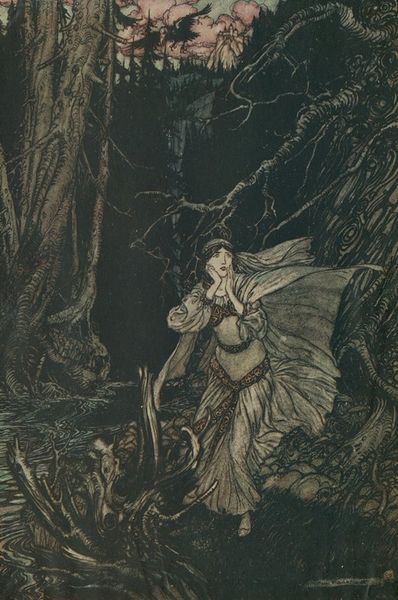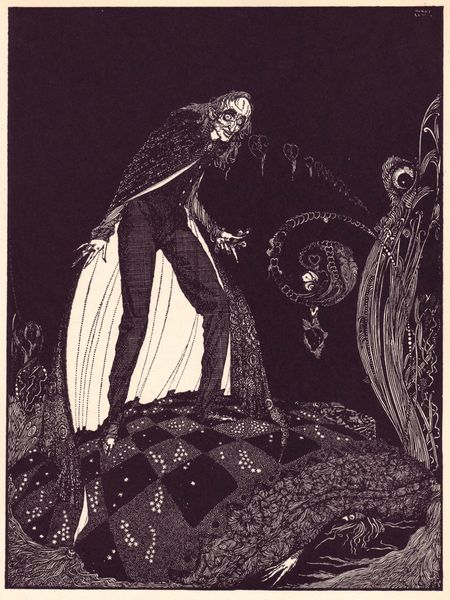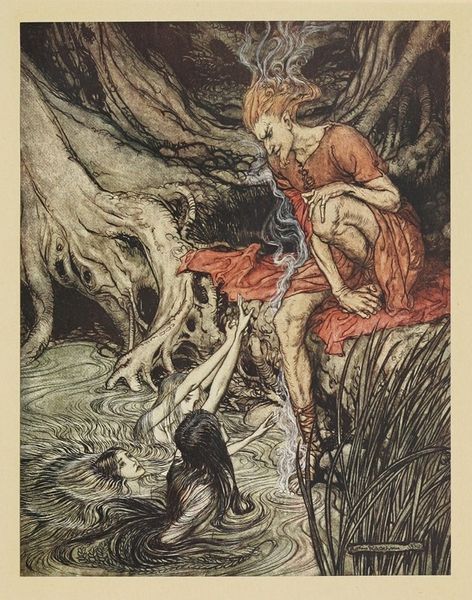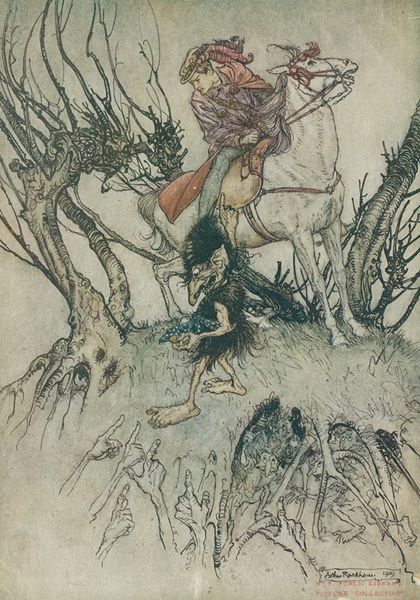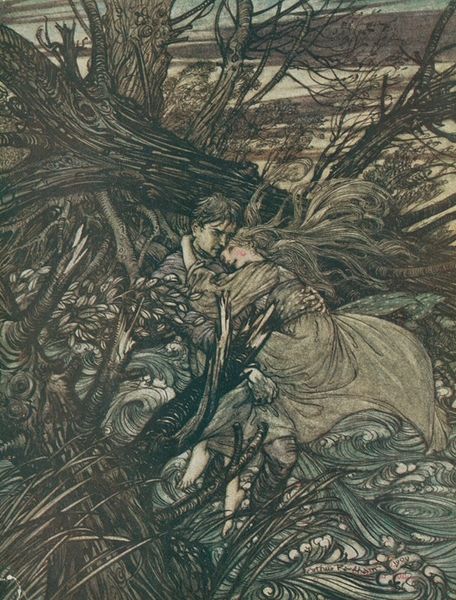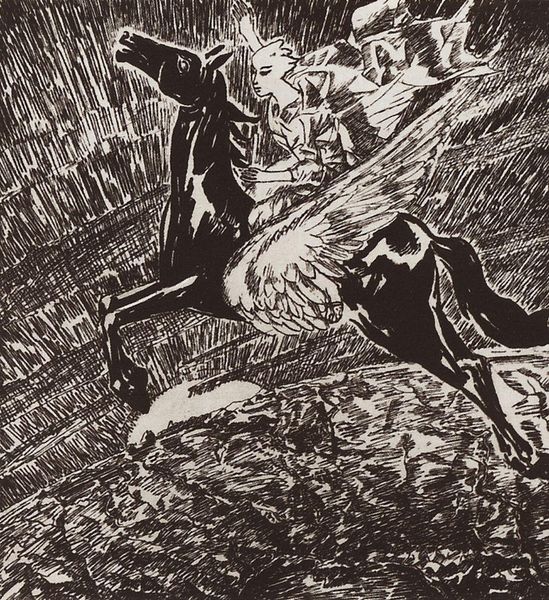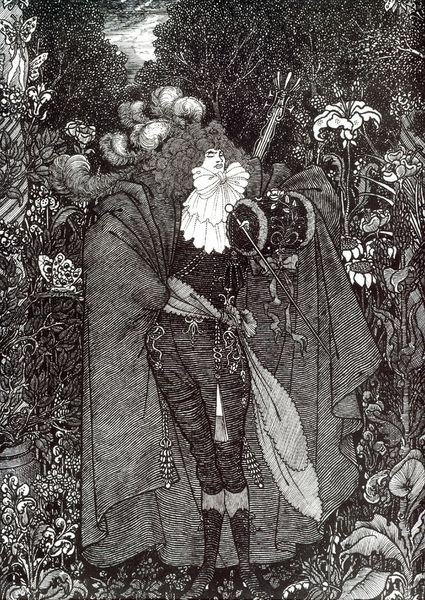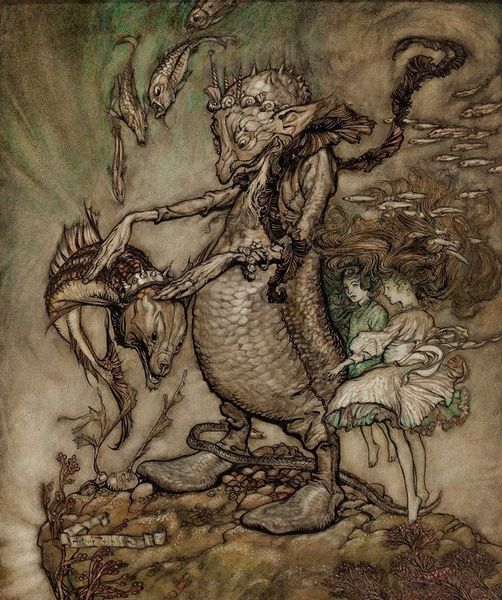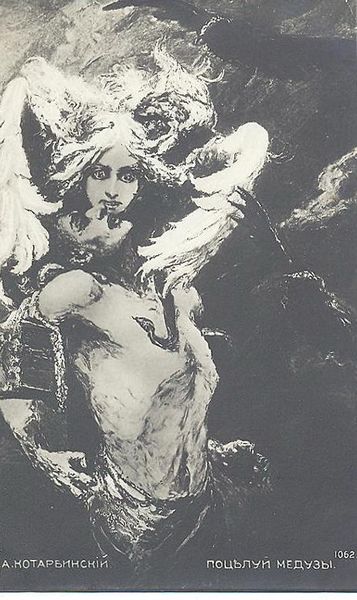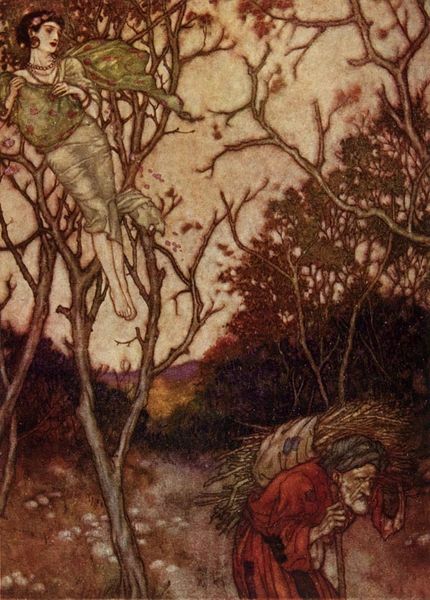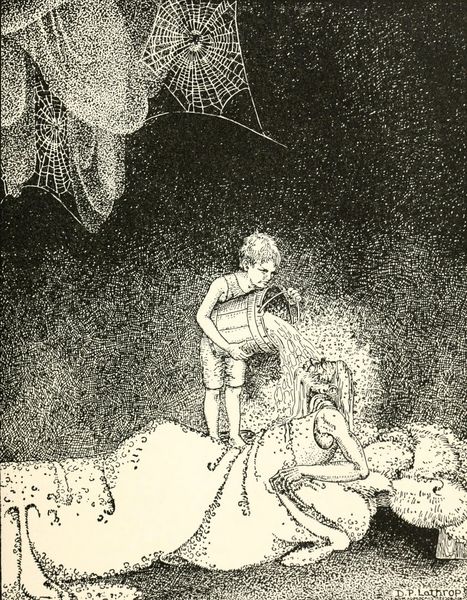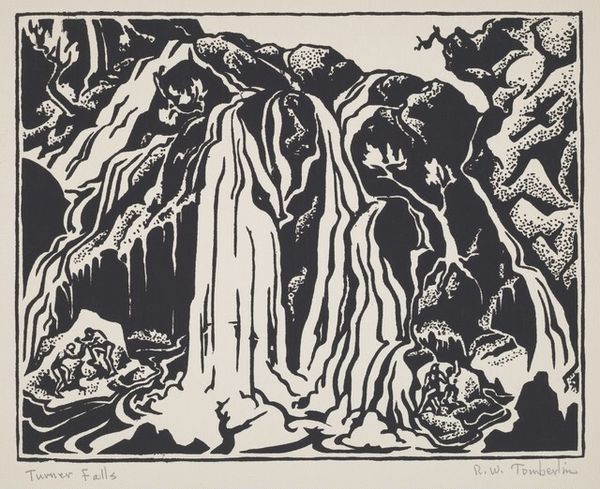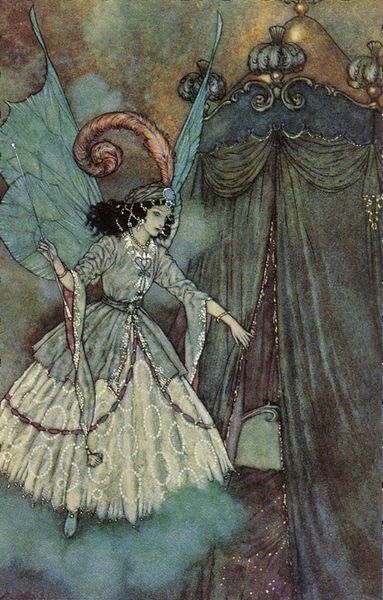
drawing, ink
#
portrait
#
drawing
#
sculpture
#
incomplete sketchy
#
figuration
#
ink
#
underpainting
#
line
#
symbolism
#
history-painting
Dimensions: 29 x 20 cm
Copyright: Public domain US
Curator: Let's discuss Frantisek Kupka's turn-of-the-century ink drawing, "The Victorious Dragon," currently held in a private collection. It’s an interesting piece, created using line and symbolic portraiture, with noticeable sketchy and incomplete elements. Editor: What a spooky thing! At first glance, all I get is a real chill—the stark contrast, that eerie figure, and the way the lines create a sense of unease... is it supposed to feel so spectral? Curator: Absolutely. Kupka frequently played with dark themes. We need to examine the materiality: the starkness of ink on paper lends itself to those high contrasts and heightened emotional impact. The production is very direct, immediate. Editor: The subject, kneeling and seemingly skeletal, draped in regal robes decorated with skulls – it’s like confronting mortality cloaked in power. Gives me the shivers just describing it. It has that gothic vibe, where beauty and morbidity entwine, don't you think? Curator: Symbolism was central for Kupka, yes. We also can think about history paintings as material. "The Victorious Dragon" as a historical record can be deconstructed when looking at class, religion, the economy in 1900s Bohemia, and how that is reflected here. We should not look past this social framework in how the work exists for audiences. Editor: The whole composition is kind of unfinished, which to me intensifies the nightmare-ish quality. It has this fleeting feel as though this dark regal specter might vanish right before your eyes like some weird ephemeral visitation! That figure in the background especially--what do you make of that ghost-like form behind it all? Curator: It echoes similar preoccupations found in symbolism, playing into these ambiguities and challenges about what is considered "complete," especially within late nineteenth and early twentieth century artistic production and its relationship with industrial processes and new printing possibilities that can cheapen "completed" artwork through replication. Editor: All that, woven into a visual poem about power and decay… a compelling piece, disturbing and strangely beautiful all at once. Gives you a lot to ponder. Curator: Indeed, thinking about labor, the ink drawing gives insight on artistic production by this artist, and society's fascination at that historical moment through aesthetic choices still discussed today.
Comments
No comments
Be the first to comment and join the conversation on the ultimate creative platform.
